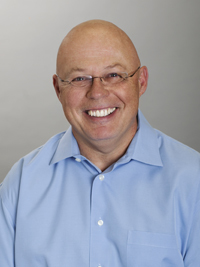
State: Ntl.
Morton: Opioid Abuse is More Than a 'Doctor Problem': [2016-11-08]
Every day, another overdose reinforces the gravity of the opioid abuse epidemic.

Dr. Joel Morton
You know that many of those misusing opioids start their fatal journey with a genuine injury and a legitimate painkiller prescription. And then, when you hear 12 states have more opioid prescriptions than people, you might wonder if the problem can ever be solved at all.
Unfortunately, the opioid epidemic is complicated. Ending it will require many people to take coordinated action — starting, yes, with doctors, but certainly not ending there.
First, understand that pain is one of the most common and difficult medical problems to treat. For much of medical history, pain care simply wasn’t a priority. That’s changed. For several reasons, providers have steadily increased treatment of chronic pain with opioids over the last 20-plus years.
There are not enough well-controlled, longterm studies of opioid use for chronic pain. And though many patients report some pain relief with chronic use, there’s also significant risk.
On the other hand, society should not attack the opioid prescription per se: Remember, there is a patient who is suffering and needs care, and opioids are medically indicated for the treatment of pain. If we merely tell providers, “You cannot write for opioids,” we handcuff them. The question is, how can a provider continue to provide compassionate care yet limit the amount of opioids they may prescribe?
The answer depends on the actions of not just medical providers, but medical educators, patients, patients’ families, insurers and our elected officials working in concert. Here’s a quick rundown of what each group needs to do:
Providers: We have the biggest job. We need to see patients early before their pain becomes chronic. We need to get required medications to patients quickly and reliably. We need to manage patients’ expectations and, when possible, use non-opioid pharmacologic treatments for pain, including muscle relaxers, anti-convulsants, antidepressants, patches, ointments, creams and compounded medications. I’ve traditionally included non-steroidal anti-inflammation drugs in this list, but they are increasingly discouraged because of the cardiac, renal and gastrointestinal risks they pose. We as providers will continue to need to gauge which patients would benefit from NSAID use and, as is the case with opioid use, explain the risk and benefit of treatment to our patients.
We also need to treat the “whole person” by employing drugless pain treatments such as osteopathic/chiropractic manipulative care, physical therapy, cognitive behavioral therapy, acupuncture and massage. (Research has shown physical therapy to be highly cost-effective for lower back pain, since it reduces the need for expensive medicine.) We need to engage prescription drug monitoring programs, sign opioid contracts with patients, and perform urine drug testing for everyone’s protection and to guide our care.
Educators: Medical schools, training programs and continuing education programs need to cover the problem of pain and treatment options in more depth. Many states’ medical boards have already made these types of educational programs mandatory.
Patients: Seek care as early as possible. Understand the limits of medicine to treat your pain. Have realistic expectations of what care will do for your pain. If your treatment plan includes chronic opioids, your doctor will perform periodic urine drug testing and will ask you to sign an opioid contract. It’s in your best interest. Do it. Tell your doctor the truth, the whole truth, and nothing but the truth.
Also, be active in your pain care. As with diabetics, hypertensives and others with medical conditions, the patient in chronic pain should be involved in the physical care that is so valuable in pain management. Since pain is multifaceted, involving our mind as well as our body, patients need to participate in the mental or psychiatric side of managing pain as well.
Patients’ families: First, never share prescription medications with others within or beyond your own family. Second, be a good cheerleader for your loved one, and involve yourself whenever you can in the “active” part of pain management.
Insurers: Accept claims and/or treatment more quickly so pain can be treated before it becomes chronic. Cover physical therapy and the other alternative/adjunct therapies previously discussed. Be prepared to cover the testing that providers deem medically necessary in the treatment of pain. Delays and denials can harm the patient.
Elected officials: Fund prescription drug monitoring programs, make these programs more robust and portable across state lines, consider opioid screenings in schools, and provide overdose-reversal drugs for emergency workers. Offer treatment in lieu of incarceration. Have drug give-back stations available.
As you can see, opioid abuse is far more than a doctor problem. It’s a chronic pain problem and a public health problem. The solution is public as well: It requires us all to contribute. Let’s get to work.
Dr. Joel Morton is the medical director of Summit Pharmacy Inc. and the clinical coordinator of Phoenix Toxicology & Lab Services LLC.